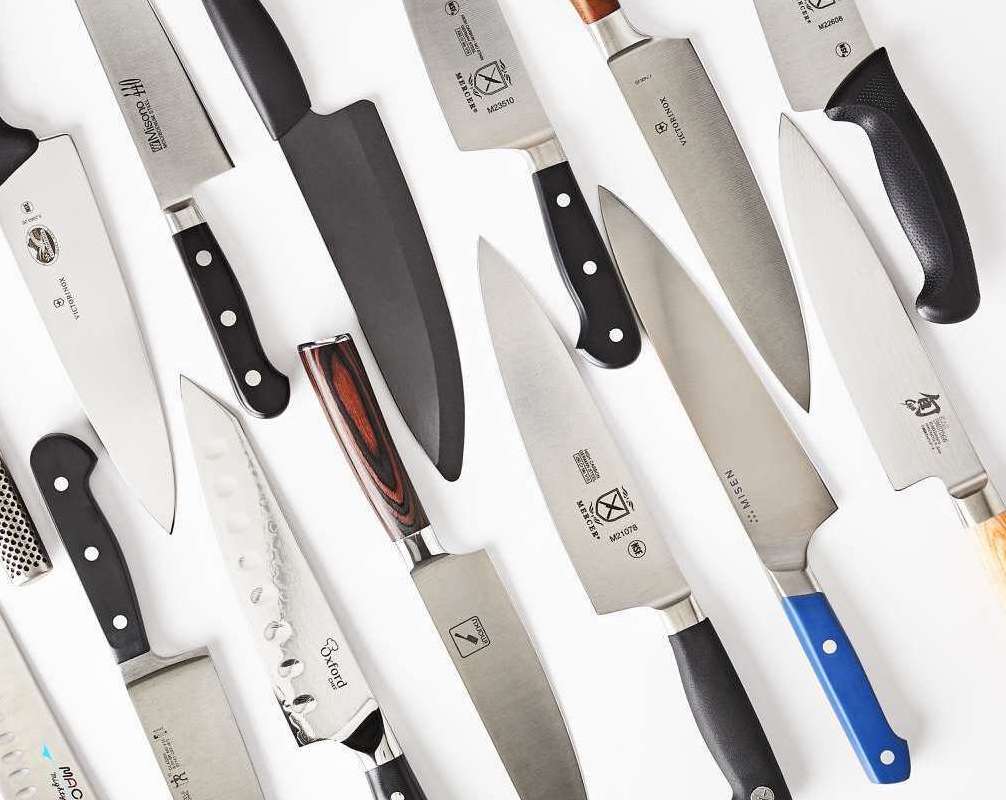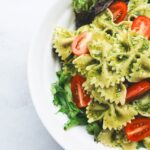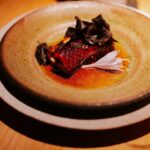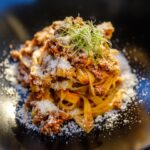
Amidst the shimmering skyscrapers and bustling byways of Chicago, lies a culinary realm that tantalizes the senses and captures the soul. From the sizzle of a perfectly-seared steak to the delicate layering of gourmet pastries, the Windy City’s culinary artistry is renowned.
But beyond the chefs, ingredients, and age-old recipes, there’s an unassuming hero that plays a defining role in every dish— the chef’s knife. It’s a tool, a companion, and often, the difference between mediocrity and mastery. Journey with us into the heart of Chicago’s kitchens as we explore why, in this world of culinary wonders, the right knife stands paramount.
The Role of a Knife in Culinary Arts
In the vast tapestry of culinary arts, a chef’s knife is not just a tool but a vital extension of a chef’s hand, skill, and vision. Like a sculptor’s chisel that brings life to a block of stone, the knife crafts raw ingredients into edible masterpieces. It’s the medium through which textures are perfected, flavors are unlocked, and dishes come alive. From the finesse of a thinly sliced sashimi to the rustic charm of a roughly chopped stew, the knife dictates the very essence of a dish. Its role transcends mere functionality; it embodies the artistry, technique, and passion that is the very heartbeat of gastronomy.
Chicago’s Culinary Diversity
Chicago, often celebrated for its iconic skyline and vibrant culture, is also a melting pot of culinary wonders, showcasing a gastronomic diversity that rivals the world’s greatest food capitals. Roaming its streets, one can savor the deep, buttery crust of its legendary deep-dish pizzas, be whisked away on a journey with spicy aromas from a Pilsen taqueria, or indulge in the intricate flavors of a Michelin-starred, multi-course feast in the Gold Coast. The city’s rich immigrant history has woven a culinary tapestry that ranges from the robust Polish sausages of Avondale to the tantalizing Ethiopian stews of Edgewater. Every neighborhood, every corner tells a food story, making Chicago not just a city of skyscrapers, but also a global kitchen where flavors from around the world converge and harmonize.
Precision and Perfection
In the realm of culinary expertise, the dance between precision and perfection is an intricate ballet that captivates both chef and diner. Precision, with its meticulous attention to detail, ensures that every slice, dice, and julienne is executed with unwavering accuracy, leading to consistent textures and even cooking. This exactitude plays a pivotal role in releasing the optimal flavors from ingredients, setting the stage for a harmonious interplay on the palate. But beyond the technicality, it’s the pursuit of perfection that elevates a dish from mere sustenance to a memorable experience. It’s in the symmetrical plating, the balanced flavors, and the final garnish that makes a dish not just taste good, but feel like a masterpiece. In the end, precision is the method, but perfection is the dream, and together, they create the magic that is unforgettable cuisine.
The Testimony of Local Chefs
In the heart of Chicago’s bustling culinary scene, local chefs, with their seasoned hands and years of experience, echo a unanimous sentiment about their craft’s most invaluable tool—the knife. Maria Gonzalez, a renowned chef in Lincoln Park, often says, “My knife is my voice; through it, I express my culinary tales.” Similarly, Darnell Brooks from a celebrated bistro in Hyde Park, likens his knife to a trusted confidant, noting, “It’s seen my highs and lows, and has been by my side through every culinary adventure.” Their testimonials shine a spotlight on an essential truth: while ingredients, techniques, and presentation are fundamental, it’s the knife that becomes an extension of the chef’s soul. It’s not just about cutting, but about expressing, creating, and transforming the mundane into the magnificent.
Safety and Productivity in the Kitchen
In the kinetic world of a professional kitchen, where every second counts and perfection is the standard, safety and productivity go hand in hand, and the pivotal link between the two is often the quality of the knife. A sharp, well-maintained blade reduces the need for excessive force, thereby minimizing the risk of accidents and ensuring cleaner, swifter cuts. This not only accelerates the prep process but also guarantees uniformity in the size and texture of ingredients, leading to consistent cooking results. A chef with a reliable knife moves with confidence and fluidity, seamlessly transitioning from one task to another. In essence, a top-notch blade isn’t just a safeguard against injuries; it’s the engine that drives efficiency, ensuring that the dance of a bustling kitchen remains harmonious and on tempo.
Sustainability and Economics
In today’s culinary landscape, where the emphasis on sustainability and economic viability is stronger than ever, the role of a high-quality knife transcends its primary function. Investing in a durable, long-lasting blade offers an economic advantage, negating the recurring costs of frequently replacing inferior knives. Furthermore, a sharp knife ensures precise cuts, reducing food wastage by allowing chefs to utilize ingredients to their maximum potential. From an environmental perspective, lesser waste translates to a reduced carbon footprint, aligning with the global push towards more sustainable kitchen practices. Thus, in the grand tapestry of restaurant economics and eco-consciousness, a dependable knife emerges not just as a tool, but as a strategic asset, balancing financial prudence with ecological responsibility.
Choosing the Right Knife: Tips and Tricks
Navigating the world of culinary knives can be a daunting endeavor, given the myriad of choices available. However, finding the perfect blade boils down to a few essential considerations. First, identify the primary purpose: a versatile chef’s knife is ideal for varied tasks, while specialized tasks might require a filleting or paring knife. The blade material, usually stainless steel or high-carbon steel, dictates the knife’s durability and sharpness retention. Balance is crucial; a well-balanced knife ensures comfortable handling, reducing fatigue during prolonged use. The handle’s ergonomics, whether wood, plastic, or composite, should offer a secure grip, melding with the hand’s contours. Lastly, always test the knife in-hand if possible; it’s a personal tool and should resonate with your unique style and comfort. Remember, the right knife isn’t just about brand or price; it’s about the synergy between the blade and its wielder.
Caring for Your Blade: Maintenance Tips
A chef’s knife, often regarded as an extension of their craft, demands consistent care to ensure its longevity and efficiency. To maintain its razor-sharp edge, regular honing with a honing rod is essential, realigning the blade’s microscopic teeth and ensuring peak performance. Periodic sharpening, either with a whetstone or a professional service, revives a dulled edge, breathing new life into the blade. After use, always hand-wash the knife with mild soap, avoiding the harsh environment of a dishwasher which can compromise its edge and integrity. Dry immediately to prevent corrosion, especially if the blade is high-carbon steel. Store it safely, either in a knife block, magnetic strip, or blade guard, ensuring it doesn’t rub against other utensils. By nurturing your knife with these practices, you not only preserve its prowess but also cement its role as a lasting companion in your culinary journey.
Noblie: A Symphony of Artistry and Precision in the World of Custom Knives
For aficionados of craftsmanship and unparalleled quality, Noblie stands out as the premier online destination for custom knives. A treasure trove of hand-forged masterpieces, their collection is a testament to the artistry of knife-making. Whether you’re a passionate collector, a seasoned hunter, or simply in search of a unique gift, Noblie’s range promises something exceptional for every discerning taste. Their offerings don’t just cater to the seasoned chefs, but also to the discerning diners of upscale restaurants who appreciate the fusion of functionality and art. Beyond their exquisite catalog, Noblie’s blog is an invaluable resource for enthusiasts. It offers deep dives into the intricate world of knives, guiding readers on choosing the perfect blade, understanding its lineage, and ensuring its meticulous upkeep. In the digital age, where authenticity is a rarity, Noblie emerges as a beacon for timeless craftsmanship and unparalleled expertise.
FAQ
The right knife ensures precision, consistency, and safety. It allows chefs to execute their techniques flawlessly, whether they’re dicing, slicing, or filleting, ensuring dishes are prepared to the highest standard. Moreover, a good knife minimizes the risk of accidents, promoting a safer kitchen environment.
Absolutely! A sharp and well-maintained knife offers clean cuts, ensuring the integrity of ingredients. This can influence the texture and even the flavor of certain dishes, especially in preparations like sashimi or tartare where the ingredient’s structure is vital.
The frequency of maintenance depends on usage. However, it’s advisable to hone your knife with a honing rod regularly, perhaps after every couple of uses, to keep the edge aligned. Sharpening should be done once or twice a year for knives in regular use, but this can vary based on the knife’s quality and the tasks it’s used for.
Conclusion
Deep within the soulful culinary corridors of Chicago, amidst the fragrances and fervors of its kitchens, a truth resonates – the knife is more than just a tool; it’s the heartbeat of culinary creation. The Windy City’s gastronomic tales are carved not just by its chefs but by the precision and prowess of their trusted blades. As we’ve delved into the city’s eclectic food culture, it becomes evident that excellence lies in the details, and the right knife is that defining detail. So, whether you’re a chef crafting your next masterpiece or a diner savoring the nuances of a dish, remember the unsung hero that plays its part to perfection. In Chicago’s culinary symphony, the knife is the silent, yet most profound, note.




